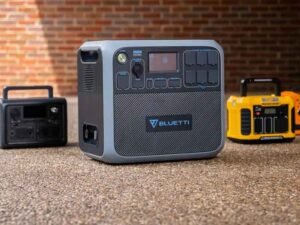Roof repairs can be a costly and time-consuming task, but they don’t have to be. Many homeowners can handle simple roof fixes themselves, saving money and preventing future damage, notes Stonelink Property Management specialists. If you’re dealing with a leaky roof or other minor issues, here are some practical tips to help you tackle the repairs quickly and efficiently.
1. Start from the Inside
If you notice water stains on your ceiling or walls, your first step is to look for leaks from the inside of your home. Check the attic or the space just below the roof for any signs of water damage. Look for water stains, wet insulation, or drips on the roof decking. This can give you a good idea of where the leak is coming from, allowing you to narrow down the area that needs attention.
2. Inspect Roof Penetrations
Most leaks occur around roof penetrations, such as chimneys, vents, and skylights. These areas are vulnerable to wear and tear, especially if they are not sealed properly. Check for cracked or missing flashing, damaged rubber boots, or any gaps where water can seep in. If you find any issues, repair or replace the damaged parts as needed.
3. Check for Missing or Damaged Shingles
Missing, cracked, or damaged shingles are one of the most common causes of roof leaks. A simple visual inspection can often reveal these issues. Replace any shingles that are broken or lifted. If you find a large area of damage, it may be best to replace the entire section of roofing.
4. Look for Debris in Gutters
Clogged gutters can cause water to back up and seep under the roof’s edge. This can lead to leaks inside the home, especially during heavy rain. Regularly clean your gutters and downspouts to ensure water flows freely. If you notice any signs of water backup or overflowing gutters, take action immediately.
5. Use a Garden Hose to Locate Difficult Leaks
If the leak is difficult to find, use a garden hose to help pinpoint the problem. Have a helper inside the house while you run water over sections of the roof, starting at the area just above the water stain. Move the hose around until the leak becomes visible. This process can take some time, but it’s a reliable way to trace the source of the leak.
6. Inspect Flashing Around Chimneys and Vents
Flashing around chimneys, vents, and skylights is designed to direct water away from these areas. Over time, flashing can become loose, rusted, or damaged. If this happens, water can easily seep through. Check the flashing for any cracks, gaps, or signs of wear. If necessary, reseal the flashing with roofing cement or replace it entirely.
7. Fix Plumbing Vent Boots
Plumbing vent boots are another common source of leaks. These boots are typically made of rubber and are designed to seal around the pipes that extend through the roof. Over time, the rubber can crack, allowing water to seep in. If you notice any cracks or damage, replace the vent boot. If the boot is still in good condition but the nails are loose, replace the nails with rubber-washer screws to seal it properly.
8. Seal Leaks Around Roof Vents
Roof vents are essential for allowing air to flow through the attic, but they can also be a source of leaks. Inspect plastic roof vents for cracks and metal vents for broken seams. If the vent is damaged, it’s best to replace it. If it’s in good condition but the nails have pulled loose, you can reseal it with rubber-washer screws. Be sure to apply caulk around the base of the vent to keep water from getting in.
9. Address Leaks Around Dormers and Walls
Leaks don’t always come from the roof surface itself. Wind-driven rain can seep in through gaps in the walls, around windows, or at the base of dormers. Inspect the areas where walls meet the roof for any signs of water damage. Look for cracked or missing caulk around windows and siding. Replace any damaged caulk and seal any gaps to prevent water from entering.
10. Repair Ice Dams in Cold Climates
Ice dams are a common problem in colder climates, especially during winter. When ice builds up in gutters, water can back up under the shingles and leak into the house. The key to preventing ice dams is proper attic insulation and ventilation. If you already have an ice dam, the best solution is to remove the shingles and install an ice-and-water barrier beneath them. You can also install heating cables to prevent ice from forming in the first place.
11. Don’t Ignore Small Holes
Tiny holes in the roof can go unnoticed for a long time, but they can lead to significant damage if left untreated. These holes are often caused by mounting brackets, antennas, or even loose roofing nails. Check for small punctures in your shingles, especially if you’ve had any exterior work done recently. Seal small holes with roofing cement or replace the damaged shingles to prevent water from entering.
12. Maintain Regular Roof Inspections
The best way to avoid expensive roof repairs is to catch problems early. Schedule regular roof inspections, especially after major storms or extreme weather. Look for signs of damage, such as loose or missing shingles, damaged flashing, or debris in the gutters. Addressing issues early can save you a lot of time and money in the long run. If you need professional help, hiring a roofer Bloomfield can ensure your roof stays in top condition with expert repairs and maintenance.
For more detailed tips on roof repairs, you can get redirected here to explore additional resources and roofing solutions.
Roof repairs don’t have to be intimidating or expensive. With a little time and effort, you can handle many common roof problems yourself. Start by inspecting the roof for visible damage, paying special attention to areas around vents, chimneys, and skylights.
Check for missing shingles, damaged flashing, and clogged gutters, and use a garden hose to help locate difficult leaks. If you find any major issues, such as damaged plumbing vent boots or leaking roof vents, repair them as soon as possible to prevent further damage.










